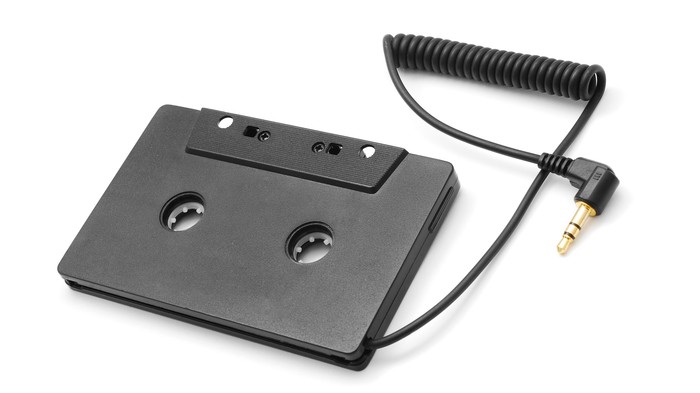The cassette player is losing popularity, but its prevalence in previous decades has made adapters for the audio plug a reality for people who want to plug a phone or iPod into the audio system. How did they do it?

If you are still driving an old wreck, this item is probably the only thing that allows the navigator on your phone to talk through your speakers. But for previous generations, it could help the iPod or Sony Discman. This is a fairly cheap device, and although it looks like a cassette, it is, by and large, an amplifier.
Of course, I'm talking about an adapter for cassette recorders - an innovative device that everyone had to deal with who still has a cassette deck installed in the car. If you had one of these miraculous devices, you might have wondered how it works - especially considering that there is no cassette in it.
This device was invented by Larry Schotz, an electrical engineer and inventor responsible for many innovations in the world of audio and video equipment in the 80s and 90s, including FM receivers, strange shaped rabbit ears and some of the earliest wireless speaker models.
The genius of the invention of Shots consists in subordinating existing mechanisms for working with an audio cassette. The cassette player transmits electromagnetic signals recorded on the audio film using the “head”, converts them into an analog audio signal and amplifies them. The cassette adapter works by transmitting a signal directly to the head without film. The absence of a magnetic film reduced mechanical noise, or hissing caused by the film.
From a 1986 patent by Schots:
An electrical conductor, for example, a double wire, is connected at one end to a plug compatible with a conventional headphone plug, to another device that produces sound, and from the other end to the audio circuit of the recording head. When the adapter is loaded into the cassette deck, and this deck, like the other device, starts to work, the signals emitted by the other device are transmitted using the aforementioned conductor and the audio circuit to the recording head, the signals from which are fed to the reproducing head of the cassette deck, and thus , they are reproduced by the audio system.
What created the sudden demand for such a device in the mid-80s? The answer is simple - the CD player, which began to be sold in portable form in 1986, was a novelty that couldn’t penetrate so many cars so quickly, but initially it was a luxury.
You may remember that the very first CD players suffered from missing some tracks. The adapter could not cope with this, but at least it could redirect this music to your speakers.
Schotz's invention was originally sold by Recoton, and it was one of two options that the electronics industry promoted to transfer audio to obsolete cassette decks. Another was the “FM adapter”, which created a tiny radio station that could transmit a signal at a certain frequency. In a 1968 review in Popular Mechanics magazine, a prototype of the Recoton cassette adapter was compared with an already sold FM adapter from Sparkomatic. It turned out that the audio quality from these two devices was essentially the same - but the cassette adapter was easier to use.

“Of the two adapters, Recoton’s is more convenient because you don’t need to install anything with it,” wrote Terry Shea. “However, it does require that you have a cassette player, and it does not have built-in power for the CD player, like the device from Sparkomatic.”
As a result, the cassette adapter was much more widespread due to the fact that it was cheap and easy to use (and the FM adapter gained great popularity in the 2000s, when cars finally started to acquire CD players, and consumers suddenly became interested in connecting different external devices such as iPod).
Today you cannot find a cassette deck in a modern car - the last model, which had a built-in cassette radio, came out ten years ago - and the cassette adapter turned into a sort of relic. And although the adapter evolved due to the outgoing headphone jack — today such adapters with built-in Bluetooth are sold — time will pass and the cassette deck in cars will be a thing of the past.
However, there were times when cartridges were new - and they themselves needed adapters. In the early 1970s, you could buy eight-track adapters that used the head in much the same way as the more common cassette adapter used. As Popular Mechanics magazine noted in 1972, these adapters allowed eight-track tape recorders to play compact cassettes, and you could even buy an adapter that added FM radio to the car’s stereo system, which had no radio.
If you want to give free rein to your inner nerve, I recommend that you get an eight-track tape recorder, connect a cassette adapter with a headphone jack to it, and connect it to the iPhone 6S. Who knows - maybe it will work.